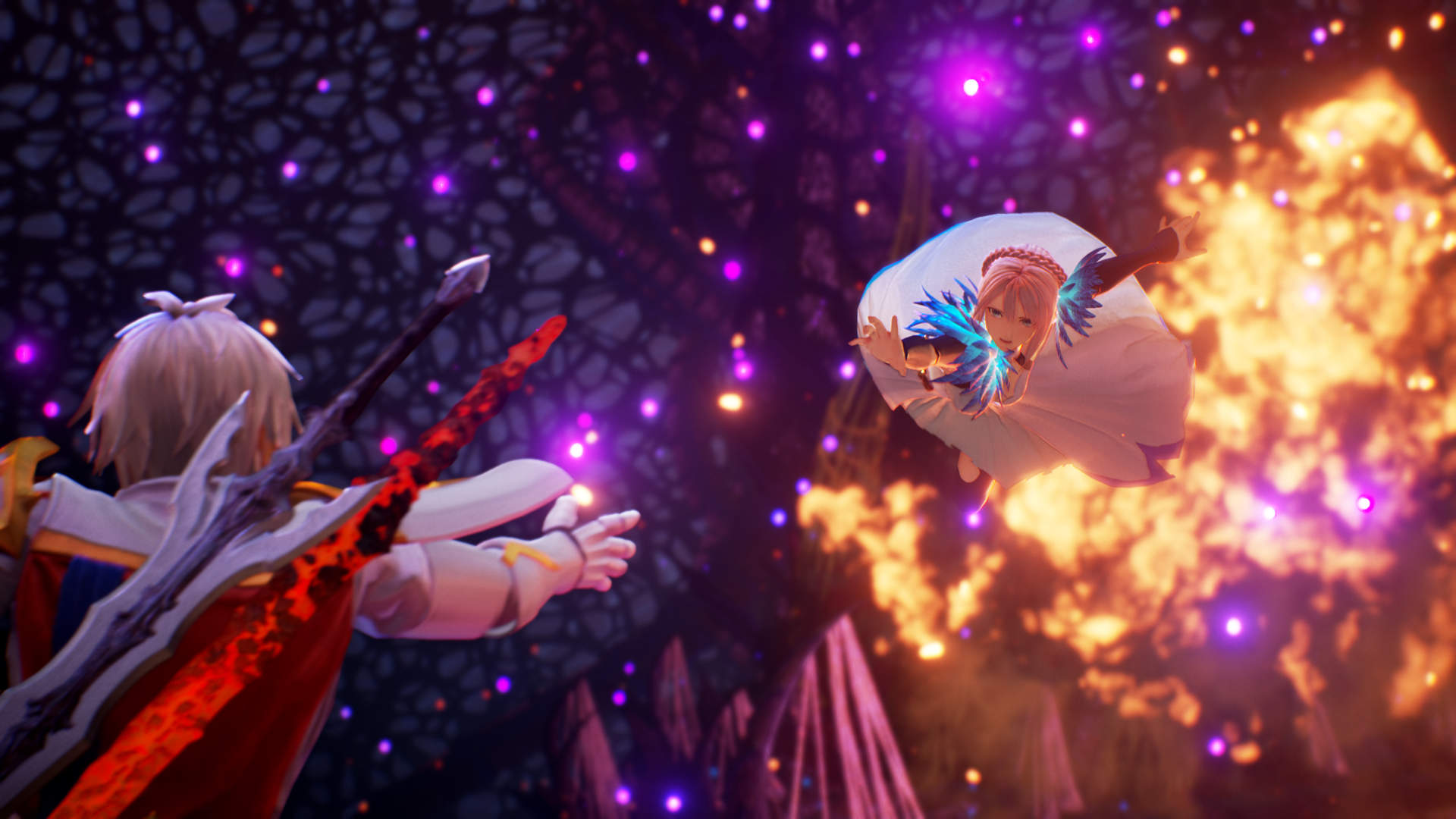Since 1995, the Tales series has graced consoles every generation (from the SNES to the Xbox Series X/PlayStation 5). Namco’s Action-RPG series has managed to outlast Suikoden, Lunar, Grandia, Wild Arms, Legend of Legaia, and maybe even Star Ocean on home consoles.
In fact, apart from The Legend of Zelda, Pokemon, Dragon Quest, and Final Fantasy, there are few other JRPG series with as many entries on Consoles that remains a player in today’s market place.
Tales has never been a ‘AAA’ franchise in terms of sales and development budget, but Namco Bandai saw potential in the franchise (Tales of Berseria sold over 2 million copies). Thus, with Tales of Arise, it moved the series to a modern engine (Unreal 4), and spent a considerable amount of marketing budget. It paid off–the game sold 1 million units in 7 days. For a JRPG not named Zelda, Pokemon, or Final Fantasy, that’s a staggering number.
As the 17th installment in the Tales series, Tales of Arise, has – potentially – marked the series’ arrival into the big time, commercially.
But the question we want to answer today is this: Is Tales of Arise the best JRPG of the last ten years? And, is it the best Tales game ever (at least by my reckoning)?
Has Namco/Bandai’s Tales Series caught up to the big AAA Hitters?
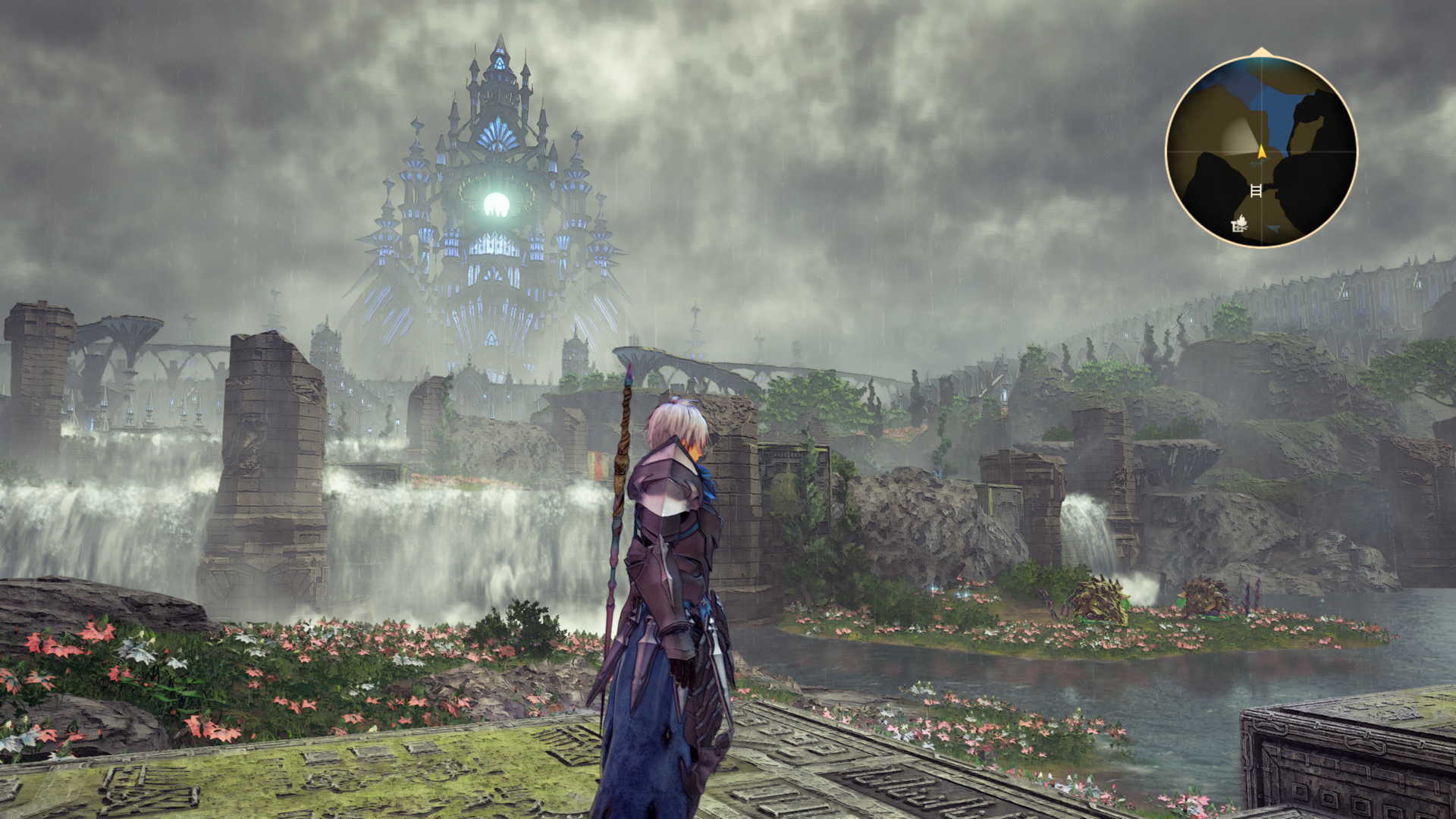
Aside from Tales of Phantasia (which looked as good as a SNES game could look), and Tales of Symphonia (which looked decent enough on the Gamecube), the series has often received criticism for looking “a generation behind” Final Fantasy, Zelda (at least up to the Gamecube days), and many of its contemporary competitors.
The complaint is valid. Tales of Vesperia was a great game, but it did look like a hi-res PlayStation 2 game on the Xbox 360/PS3 era. In fact, Tales of Graces F does not look out of place within the PS3-PS4 library of Tales games, despite being a higher resolution port of a Wii (Gamecube hardware) game.
The Tales games got by on the clever use of cel-shaded visuals, and above average (though at times excellent) anime styled artwork. In someways, I still feel that Tales of Arise, despite running on the Unreal 4 Engine, has not broken away from this ‘curse’.
First, it looks behind the times when compared to AAA action-RPGs that aren’t inherent Nintendo Switch games. Horizon Zero Dawn looks a generation better, and so does Final Fantasy XV (and The Witcher 3), for the most part. These are older games, but yet, they look better, even though they used more taxing rendering techniques for their more realistic visuals.
I am not talking about character design. I understand why Namco would keep the ‘Anime look’, after all, this visual style is part of Tales’ identity as a franchise. I think Tales is an “attractive” game thanks to its artwork.
But, the technical hiccups abound, and that shouldn’t have been the case in a linear, cel-shaded game like this. Arise isn’t open. There are larger areas with different branching pathways, but the world isn’t open as in it is Horizon Zero Dawn, or in Zelda Breath of the Wild, to name two examples.
There are load screens dividing areas, and sections, and for the most part, players are confined to linear levels (though you can travel back and forth between them on foot or through fast travel points). My point is that there should be no reason for the horrible pop-up issues that consistently plague this game.
Pop-up (mainly textures loading in late and visibly on the screen) has been a problem in last generation open world games. But if, Red Dead Redemption 2, a game that looks a full generation (or two) ahead of Tales of Arise, running an infinitely larger world can manage to mitigate ‘pop in’ to the point where you have to specifically look for it in order to spot it…on base PlayStation 4 hardware, no less, I can’t quite comprehend how both the Xbox Series X and PlayStation 5 versions of Tales of Arise have a persistent issue of texture pop in from beginning to end in both, performance and graphic quality mode.
First of all, if you are playing on ‘next gen’ hardware, forget Quality Mode. The resolution is higher, but the frame rate mysteriously takes a nose dive, and you still have to deal with the pop-in issues. Performance mode, for the most part, stays locked at 60fps which is ideal in a game like this, where combat is fast and furious. Performance mode is the way to go on next generation machines.
That said, the texture pop in, is some of the worst that I have seen in any game. Textures everywhere load only a few meters away from your character. It is noticeable, and bothersome. I never got used to it during my 40 hour play-through.
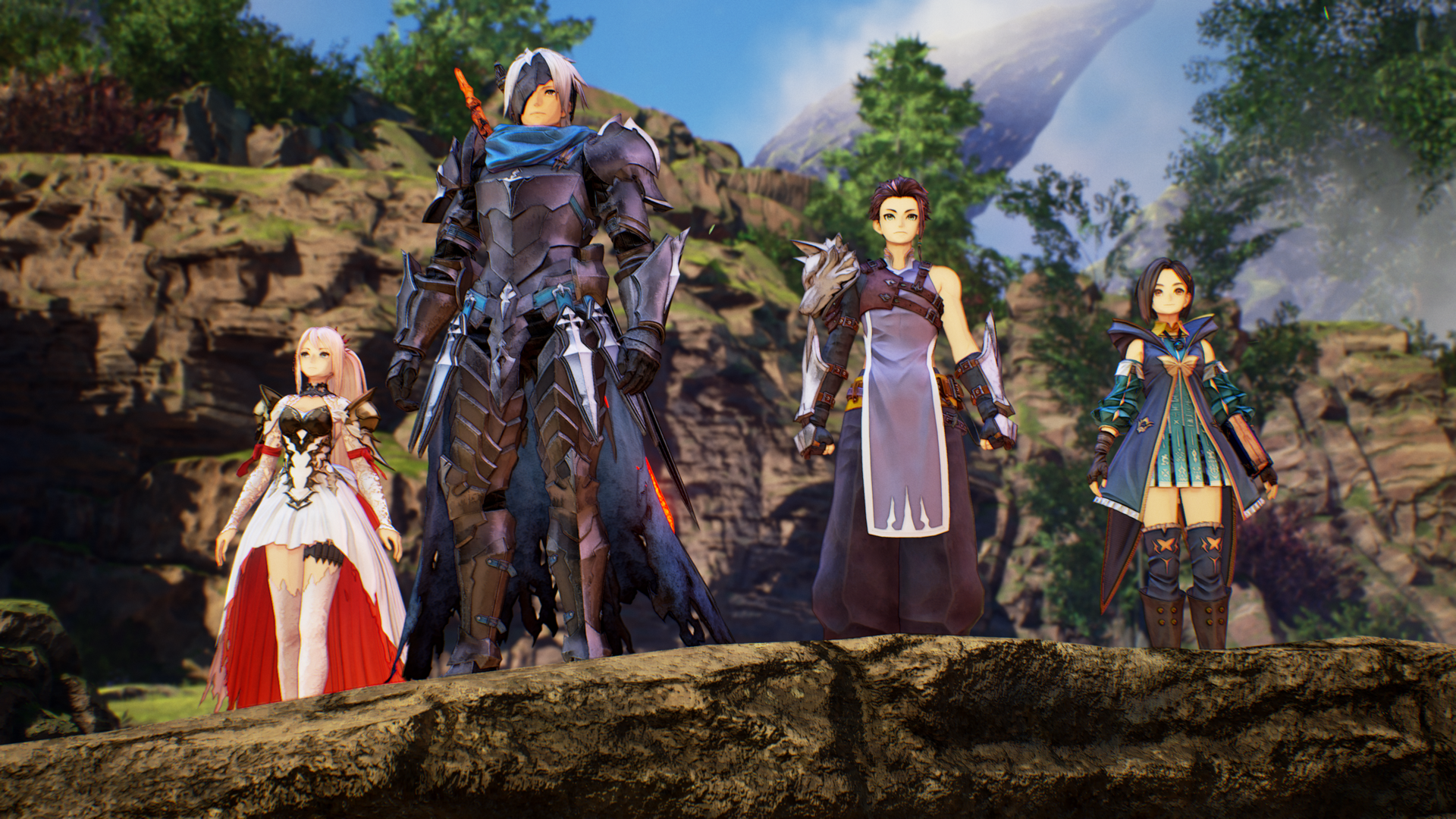
Apart from those issues, Tales of Arise’s artwork is stellar, and it is what pushes it beyond (another Unreal 4 JRPG) Dragon Quest XI in my eyes. Shionne is a beautiful character to look at, and Alphen looks the hero part. The one villain is carbon copy of Sephiroth (but it wouldn’t be the first time that a JRPG copies his ‘look’), and the rest of the cast save for Kisara (and maybe Dohalim), came from a JRPG 101 character design book.
But what makes Tales of Arise stand out from the rest of the JRPG pack, is the other worldly beauty and design of some of its most imposing structures. In fact, the one game that Arise reminded me most of is Xenoblade Chronicles 2. This does not happen by mere chance, Minoru Iwamoto (Art Director) also worked on Nintendo’s popular JRPG.
To end things on visuals, Tales of Arise’s artwork makes the game look better than it actually does on a technical level, and I would hope (that given the game’s popularity) at some point, a real next generation patch improves the resolution in performance mode and eliminates the texture loading issues. As it stands, Tales of Arise is a good looking JRPG, but falls far behind last generation Western AAA efforts.
It Plays Like Tales Games Always Have But With Massive Refinements to its Battle System
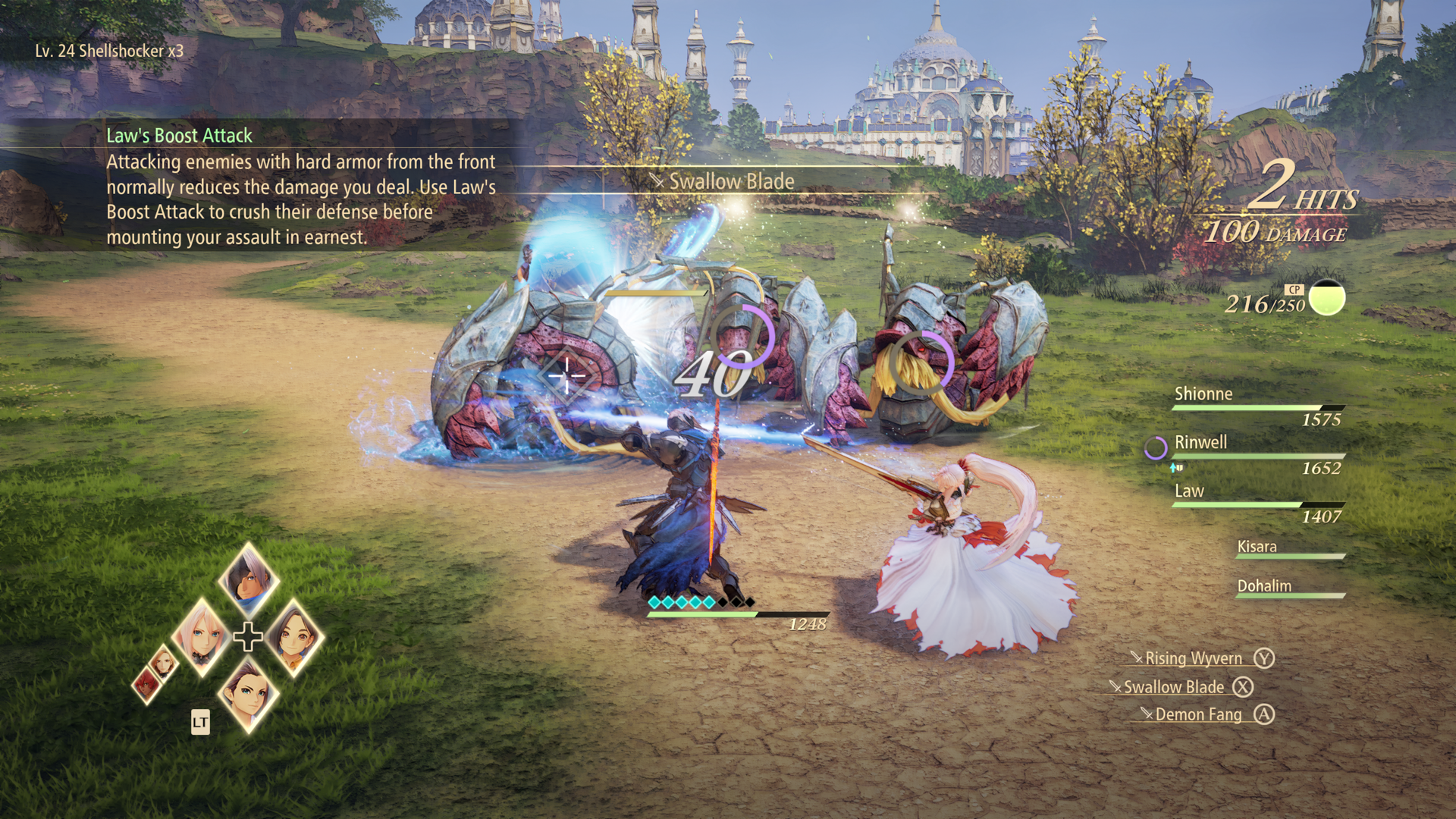
Walk into Tales of Arise expecting that the series committed to an ‘open world’ and you will be slightly disappointed. Walk in expecting a prettier Tales games with some large areas in which to battle and seek resources and items, and you will find joy in Arise’s familiarity.
Tales of Arise plays like every other Tales game that came before it. It is as linear as Tales of Graces F, but with a few ‘quality of life improvements’ thrown in for good measure. You can save anywhere, and the game does a good job in its autosave feature which was welcomed, given that the game crashed twice during my play-through (digital edition) on Xbox Series X.
The gameplay is largely “story driven”. You travel from plot point (town/capital) to plot point. In order to get to the next town/capital, you have to traverse through linear areas filled with monsters ( and branching paths, at times). It is in these areas where the game encourages you to “grind” in order to nab resources (useful in weapon forging, and for sale in order to amass Gald), and gain precious EXP.
In this way, Tales of Arise does not deviate from the usual quarter century old ‘Tales’ style of play formula. Improved visuals, larger areas and the ability to jump and swim, in order to expand exploratory options, make this (travel from town/plot point to town/plot point) process a bit more engrossing that in recent previous entries.
For the most part, the game’s pacing is excellent…at least until you reach the last quarter of the game. My last ten hours with Tales of Arise were a bit of a drag. It was, for all intents and purposes, ‘work’.
The game’s excellent pacing broke down in surprising fashion, and the game had me back tracking in certain areas where the fast travel system would have greatly aided things, but alas, in these instances, the developers decided to block this feature.
Perhaps, most damning of all, are the game’s last few dungeons. These (especially the final one), are mainly long corridors filled with monsters to fight, over and over again. Clocking in at 40 hours, Tales of Arise is one of the shortest Tales games that I have played, and yet, the game felt longer (and more tedious) than it should have thanks to those battle intensive hours.
Had Tales of Arise been a turn-based RPG, I think that last stretch of battles would have turned me off from completing the game, or at the very least, I would have deducted more than .5 of a point of its overall score for it. Thankfully, Tales of Arise continues the series’ tradition of party based action combat, and it is now better, and flashier than ever.
Rolling, Timing, Items….
Aside from the Battle Arena in Menancia, and some of the hidden (and not so hidden) especial boss monsters, Tales of Arise is fairly manageable in terms of difficultly. Going into a battle stocked (15 is the max number that you can stock up for each item) with life bottles, various healing, and CP (magic) restoring gels is the key to success, as long as your party is properly leveled up.
The times I encountered trouble with the game’s bosses (some which I survived by the skin of my teeth), were more the result of having insufficient healing items, and than actual ‘Leveling up’ issues. Gald is scarce in this game (as enemies do not yield it), so selling items, and resources at Camping points, and at Inn shops are the key to gaining enough Gald to upgrade weapons (via forging), armor, and accessories.
All of this leads to battle. Battles are fast, and can end in seconds, and in worst cases minutes (thankfully few bosses lasted more than 10 minutes), but there is need for constant attacks (while watching the GP gauge), health monitoring (in order to use potions if Shionne has run out of CP or is out of commission), and party monitoring as individual party members consistently fill their special attack gauge. Said attacks are instantly available at the touch of a button (the D-Pad).
These attacks are the key to succeeding in the game, their constant use can disrupt enemy attacks, while dealing large amounts of damage. In some instances, this can make the game rather easy, but in some of the toughest battles these attacks are an absolute necessity. Apart from those attacks, each party member on the field can fill a ‘limit break’ type of gauge, which will lead them to perform a massive attack on their own (AI) accord.
You can control any party member that you wish, but I stuck to Alphen (the game’s male protagonist), since he is the hack/slasher of the group. Alphen has a variety of preset attacks (artes) than can be assigned to one of three buttons (or six, once you can use the Left Trigger as a modifier). These Artes can be upgraded, and maxed out by utilizing them in battle consistently.
Alphen does carry the flaming sword, which opens a “powered up” set of attacks, at the cost of his HP. I rarely used this, but it is an option if you find yourself in a bind.
Players can now roll out of the way (ala Dark Souls) of enemy attacks by hitting the right trigger. If performed at the right time, a second long window into which to counter (by hitting RB on the Xbox) opens up. All in all, battles are always a hectic affair, and the entire system keeps you on your toes.
Battles quickly turn into visual spectacles, but they never get into the “disorienting” territory of Final Fantasy XV’s battle system (at times, I didn’t know what was going on in some fights in that game). Tales of Arise, certainly has the best battle system for a party based JRPG that I have played.
On the topic of Final Fantasy XV, Tales of Arise is very similar (but superior) to Square’s game in terms of its battle system, but also in the “Camping and Cooking” spots.
If I recall correctly, camping was one of the activities in FFXV that allowed me to do both, bond with the party, and cook meals that provided timed stat boosts. Camping in Tales of Arise is utilized in the exact same way. You can play Skits (where available), cook (for timed stat boosting), and even talk to certain party members that you wish to bond with.
There is little negative to talk about in terms of Tales of Arise’s gameplay, it is a linear JRPG, through and through. Save anywhere features, and fast travel (to anywhere) points available right up to the final boss battle, makes the game more accessible than previous entries. The only down side, were the slow and battle filled final 10 hours, and perhaps, the DLC content.
DLC Boosts…What does it Mean?
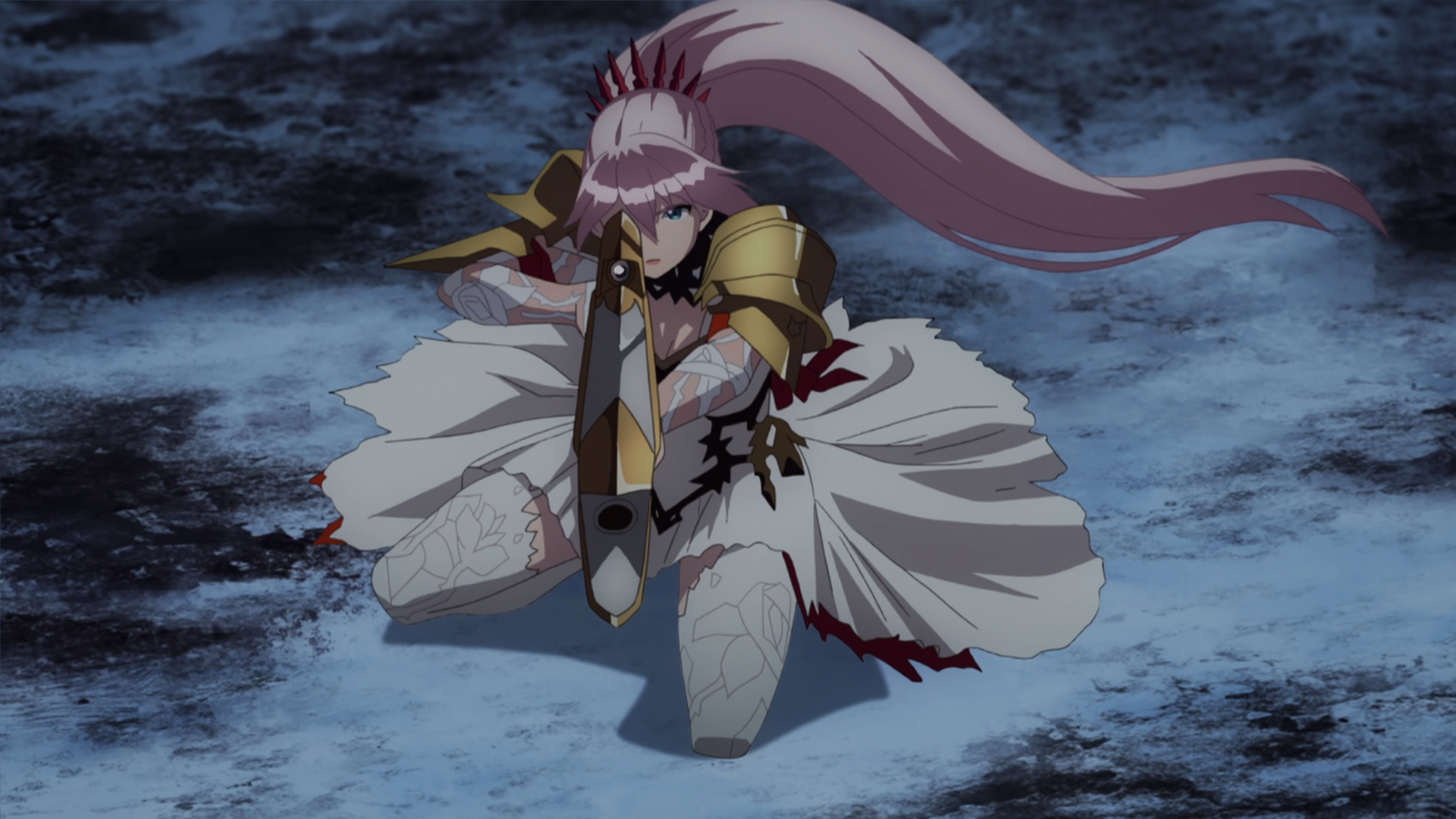
I don’t mind cosmetic upgrades, but EXP boost paid content…that’s another matter. I don’t know if the developers designed certain optional bosses, and the Battle Arena to be extremely tough for decent leveled characters (you encounter the Battle Arena relatively early in the game) in aims to get players to buy the DLC 20% EXP boost, for example.
I don’t mind the silly DLC that allows you to dress your cast with even sillier bunny ears, but the extra EXP made me wonder. The Battle Arena was an impossible ask for my party when I first arrived at Menancia, and it seems, that unless you want to spend countless of hours grinding, the EXP boost is a must.
It is a shame (the seemly required DLC EXP boost), because I had great times in previous entries (that also featured an Arena) just through normal play.
Side-quests, and the Fishing Game
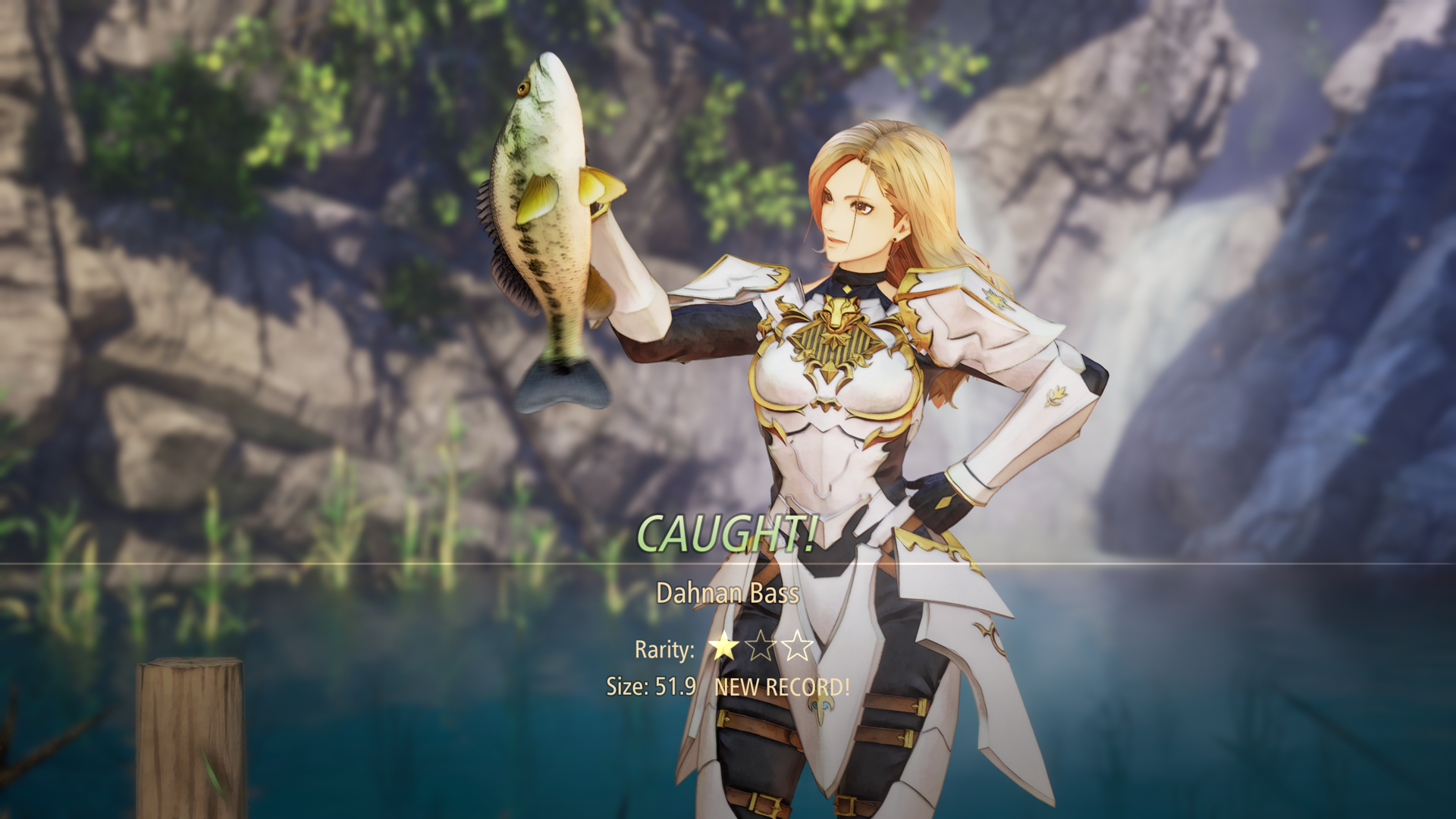
No, Ocarina of Time did not lose its ‘Best Fishing Mini Game Ever” crown here. At this point, I have accepted the fact that Ocarina’s fishing game will never be toppled by any other JRPG or WRPG a simple fact of life.
That said, Tales of Arise’s fishing game is better than FFXV’s, and it was actually quite entertaining for brief periods of time.
Side quests from NPCs are everywhere in this game and they usually involved handing over materials to these non player characters, or fighting some monsters (and bosses). These side quests are nothing to write home about, but the allure of most linear Japanese RPGs lies elsewhere…
Tales of Arise and Maquia: When the Promised Flower Blooms
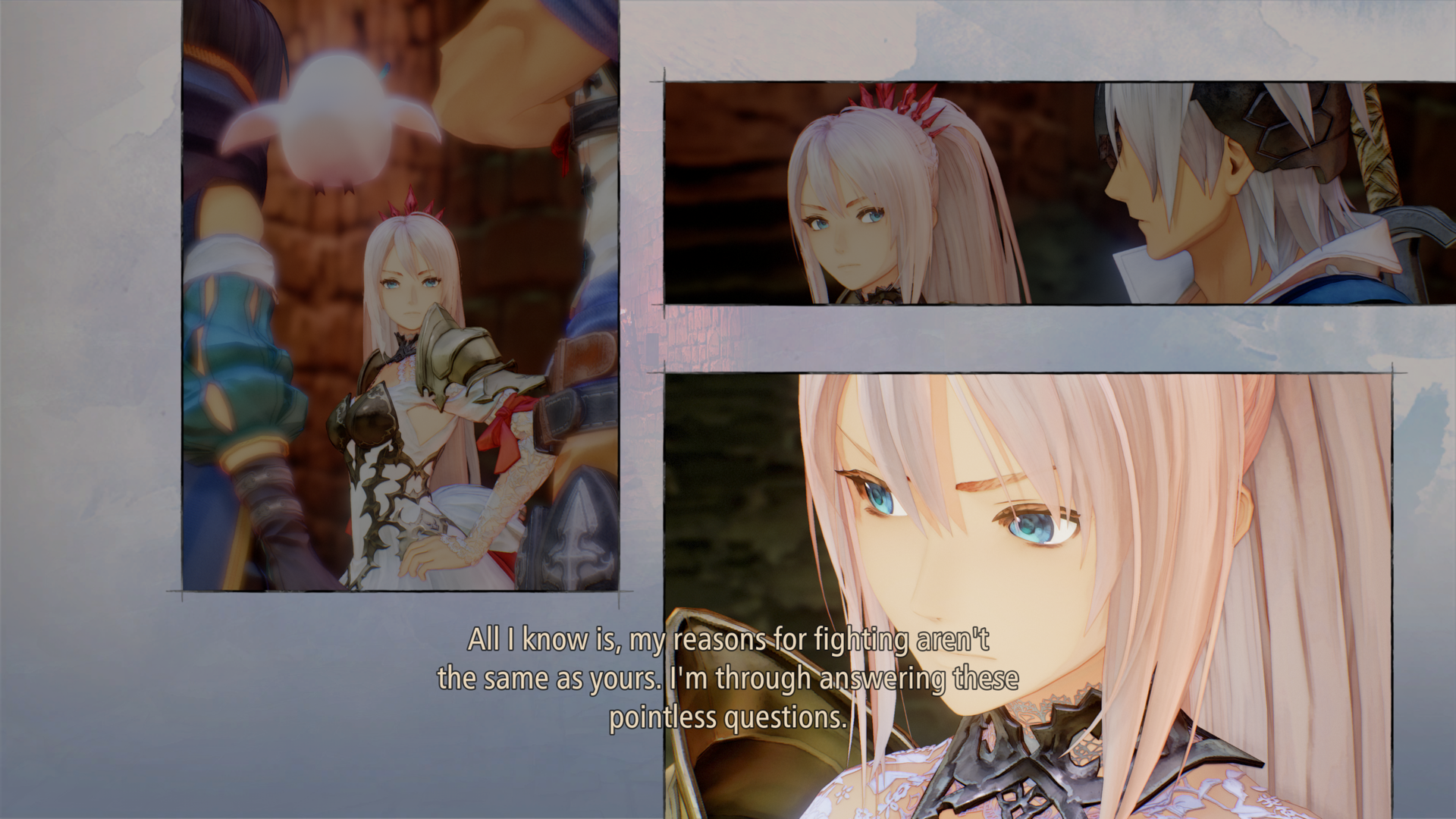
You might be asking your self the following: What in God’s green earth is Maquia? Maquia is a 2018 Anime film, and while it might not seem like the proper thing to do (bring that film into this review), I have a point to make.
For the most part, over the last 10-12 years, I have been more impressed by Western storytelling in games than I have been by JRPG stories. It is odd for me to write, and acknowledge this fact, because the reason that I fell in love (back in the 1990s) with JRPGs in the first place, was the fact that they used to tell the best stories in video games.
Western developers caught up, however. Over the last ten years we have seen Naughty Dog consistently deliver Hollywood A- level writing in its games. Within the RPG genre, The Witcher 3 delivered a great story with some of the best characters that we have seen, and I would go further in stating that in terms of overall storyline (and protagonist) within the modern RPG genre, I haven’t played a single RPG that has captivated me more than Horizon Zero Dawn.
So, I have found myself asking some tough questions lately. Especially, after finishing Tales of Arise.
Have the Japanese lost it? Do they lack writing talent within the Video Gaming Industry? Heck, I have found myself liking Western made “Anime” more than actual Japanese Anime, as of late. It is the Japanese? Or, am I going crazy? I have even come to wonder whether (in my mid 30s) I have just “outgrown” my 20 year long Japanese Anime phase.
Enter Maquia: When the Promised Flower Blooms. Maquia is now available on Amazon Prime. Its premise of an immortal (not really immortal, but slow aging) girl who raises an orphaned normal human boy from infancy to adulthood, might not seem all that enthralling. But oh boy! Maquia might be the best film that I have seen in years, Anime or otherwise.
This is a film that everyone should watch, but I would WHOLE-HEARTEDLY recommend it to parents. The movie crushed my soul, I cried like a baby at different parts, and it really broke my heart in ways that it hasn’t been broken since The Road and The Grave of Fireflies (another Anime film).
Maquia’s writing is stellar. Its character development is unmatched, and even though the premise doesn’t sound like much, Maquia is an epic film, with large scales battles, and even flying “Massive dragon like creatures”.
But what Maquia did better than anything else, was in presenting its story of a caring mother, who always saw her child with undying, and unwavering love despite many trials and tribulations, and in the end the message that a ‘son’ or ‘daughter’ will always remains a parent’s ‘child’ even if said ‘children’ live long enough to be 90 years of age, was beautifully (and powerfully) conveyed.
The film had a grand plot, that fused political, social, and global themes with fantasy, but at the heart of matter, and the only thing that really mattered, was Maquia’s (the mother) and Ariel’s (the son) relationship with one another in the story. Maquia is a love story, but a love story chronicling the most powerful love in existence, the love between a mother and her child.
There were other equally important themes conveyed by the movie, and I could write an entire essay on it. But, the point in bringing Maquia into this review is this: The Japanese can still think outside of the box, and deliver some of the most awe inspiring heart breaking stories imaginable. They are even, at times, the very best at it.
Sadly, it seems that most of these talented writers are doing Anime films instead of Video Games.
Tales of Arise is the latest installment in a long running JRPG series that is heavily influenced by Anime in style and substance. If I am being honest, given the “darker” and slightly more realistic approach to its artwork than previous Tales games, I expected Tales of Arise to offer a better tale.
There was a potential for a great love story here between Shionne and Alphen. There is a love story, of course, but it never really reaches its potential. Tales of Arise is more preoccupied with giving every member of its six member cast, nearly equal amounts of screen time, than it is with creating a special bond between Alphen and Shionne.
I understand that this is how the Tales series has always been. But the better stories in the previous games, either had a likable cast (Vesperia, Graces), or huge amounts of humor (Legendia).
I think Shionne and Alphen are likable enough, but there is no humor to carry the day during party chatter (and there is plenty of it) in the optional (fully voice acted) skits. I never felt connected to this party, even if I did enjoy the over all plot, for the most part.
Many like to hate on FFXV, but I felt that it did well in conveying the friendship of the all male cast, and in the end, consequently, the finale was somewhat touching for me.
The touching ‘pull of the heartstrings’ moment did not happen in Tales of Arise (despite its music’s best efforts in trying to squeeze emotion out of me). My lack of strong emotions towards this cast was strange, given that I did like Shionne, and her ‘problematic’ attitude made sense within the context of what was going on with her character’s internal turmoil. .
Where Arise does excel in terms of its storyline, is in tackling social issues such as injustice, racism, inequality, class divisions, and slavery in deeper ways than one might expect from a game like this.
The entire game (from beginning to end) dealt with these issues, and took a strong posture (rather than just exploring the subjects) that showed what the writers felt ‘the game’s world’ should have been as an ideal place for humanity. For the most part, it was refreshing to experience this within the game’s story line.
The set up to the game’s story is not complex, Rena and Dahna are nearby (as in “next to each other”) planets. The far more advanced Renan’s invaded Dahna 300 years prior to the game’s start. Because the Renans were the far more advanced race, they managed to quickly enslave and subject the Dahnans to harsh labor in order to drain them from their astral energy.
Naturally, the Dahnans see the Renans with hate, resentment and bitterness. While the Renans see their captives as subhuman, and unworthy of equal rights. It is an interesting take on the ‘Conquistador/European invades the Americas, and Enslaves its more primitive inhabitants’ story. And yet, there is an interesting (if quite ironic and predictable) twist to the entire thing.
Still, the game does well in presenting different types of oppression, and how the oppressed are forced to comply by different means of persuasion which ranged from fear of brutality (chains and whips), to complacency (paid harsh labor, and livable conditions, but with clear restrictions).
You start the game’s story as Alphen, a Dahnan slave, who eventually runs into Shionne (a Renan Damsel). These are the game’s two leads, and it naturally creates an interesting dynamic for the would be love birds. What is even more interesting is that Shionne is cursed with some sort of dark energy that causes excruciating pain to anyone that she touches, or that touches her in return, and that Alphen (who like every other JRPG hero is an amnesiac) is immune to pain. Yep, as you will tell right from the get go, they are a match made in Heaven.
From there both join forces with other (equally cliched) cast members in order to rebel and take down the Renan Lords along with their cruel regimes in different areas of the planet.
A focal theme is rebellion from oppression, and yet, at times, “forgiveness’ takes center stage and it makes some of the characters’ decisions at key moments take a turn into the irrational. Revolts are violent affairs, many times fueled by years of oppression, and the need to enact justice upon the oppressors. Tales of Arise conveys this well, but at about the 20 hour mark the story begins to take a path towards “forgiveness” which in certain ways contradicts the “rebellion” stance that the story line boldly took hours earlier.
*****Spoiler Warning *********
In this most maddening case of a character in the game acting irrationally. A main character decides to forgive a villain who was beyond (way beyond) forgiveness. By doing this, the character condemns another character that this person (the party character) was trying to save above all else.
It was a stupid moment (even by this particular character’s standards), and it created the need for an even more irrational (even within the boundaries of what already was weird story) Dragon Ball Z inspired chain of events plot device to unfold in other to save the character that he condemned to death.
It was a strange moment, and I quite didn’t understand why the writers felt the need to push the “forgiveness” theme to extremes that didn’t make rational sense within the context of what was transpiring in the story.
********Spoiler End************
I won’t speak too negatively of the game’s story, though. It delivered a good, if thoughtful, lesson in the evils of slavery, and discrimination, and in that sense, Tales of Arise is a triumph within the JRPG genre.
In terms of everything else (overall storyline, character development, love story), Tales of Arise is more of the same. I still like Tales of Vesperia’s storyline more, much more, despite of the fact that I was entertained for the most part with Arise’s middle of pack storyline, and would recommend the game to any JRPG fan that is interested in playing it.
The Best For The Last

The one area where Tales of Arise is quite superior to its predecessors is in its music. Motoi Sakuraba (of Star Ocean, Dark Souls fame) delivered his best work here. The music elevated every scene, and even aided some of the more ho-hum story moments with its grandeur.
The OST is Fully Orchestrated. Namco pulled no punches here. I found the music here to be superior to DQXI’s and the vocalized tracks were great enough that I went online in search of them (even though I don’t speak or understand Japanese).
The game’s voice acting is superb (for a JRPG), but it does fall short of Naughty Dog’s efforts, and Horizon Zero Dawn. Then again, as stated before, actors can only work with the lines that they are given, and Tales of Arise while succeeding in certain areas of its storytelling, fails badly at developing the personal relationships between its cast members.
Is Tales of Arise The Best Tales Game Ever? The Best JRPG of the Last Ten Years?
That’s hard to say. If story is everything to you, then you will find that other Tales games had better plots, and characters. If gameplay, however, is what you most value, then Tales of Arise plays better than any game in the series before it.
The game’s combination of a decent story with good audio/visual presentation, backed by an awesome battle system will be enough for some to crown Tales of Arise as the greatest Tales ever (Metacritc wise it certainly is). But for me, I still feel that Tales of Vesperia is the pinnacle of this series, though not by a wide margin.
On a side note, I think Tales of Arise is a top five JRPG (over the last ten years), which might not be saying much given the options available. However, Dragon Quest XI, turn-based combat, and silent protagonist aside, might actually have the better journey. Enix’s latest DQ game was a bit more enjoyable to me, and as such, I have to rank it above Tales of Arise.
Gameplay: 8.5
Had Tales of Arise ditched some of the series’ linearity, and had made the last ten hours a little less combat intensive, the score would have been a 9.0. But alas, those last ten hours were a drag, and inexplicably tough (even in normal mode). The game’s side-quests are in large part “filler” material, but the game’s battle system is too awesome for me to score Tales of Arise any lower in this category.
Graphics: 7.0
The game’s artwork is deserving of a 9.0, but the game’s technical execution of said artwork is lacking. Keep in mind, that I played this on the Xbox Series X, the most powerful console around, and the game doesn’t hit 4k at 60fps, and has very noticeable (and annoying) texture pop-up issues everywhere. Its implementation of the Unreal 4 engine is several years behind Gears 5, to name one example.
The game is (visually) on par with Dragon Quest XI, meaning that even though Tales of Arise is the best looking Tales game (at launch) in nearly two decades, it remains a generation behind. That said, Tales of Arise manages to impress at times, but it is the artwork, rather than the technology, that shines.
Music: 9.5
Motoi Sakuraba’s best work. There are shades of Star Ocean and other Tales games here, but Tales of Arise sounds bigger, and better than any of the games that Motoi Sakuraba has composed music for before it.
Replay Value: 8.0
It will keep most, even those only looking to enjoy the game’s story, busy for 35-45 hours. For completists (without the DLC EXP Boost), who seek mastering the fishing game, and the completion of all quests, Owl search, and hidden bosses. I can see 80 plus hours of gameplay thanks to the game’s New Game Plus mode.
As far as this series goes, Tales of Arise is on the shorter side of things, which is either a good thing or a bad one, depending on what your are looking for from the game.
Story: 7.0
The story does the job in keeping you interested throughout the first play-through, but it doesn’t do much else. The game does touch, and goes deeply into certain serious political and social topics, but the characters themselves are not the greatest bunch that the series has seen, even if the potential for them to be special was there.
In that sense, Tales of Arise doesn’t break the mold for JRPGs or this series. For some, that might be reason enough to pick the game in the first place. This is certainly a ‘Tales’ tale.
Overall: 8.0
I enjoyed Tales of Arise, and I highly recommend it to JRPG fans everywhere. The game possesses the most fun battle system in the genre, and it is accompanied by great artwork and an incredible soundtrack. Arise is breaking sales records for the series and that means that, thankfully, we will likely to receive another entry in the future.
That said, Arise has a difficult and “workman like” last quarter of its play-through, and its characters, and storyline left something to be desired. The game doesn’t have a bad story, by any means, but it isn’t the best in the series (and much less the genre) either.
Agree with the author? Couldn’t disagree more and are frothing at the mouth to tell him? Leave a comment here, on Facebook or send an email and make sure to follow Never Ending Realm on Facebook, Twitter, and YouTube!
